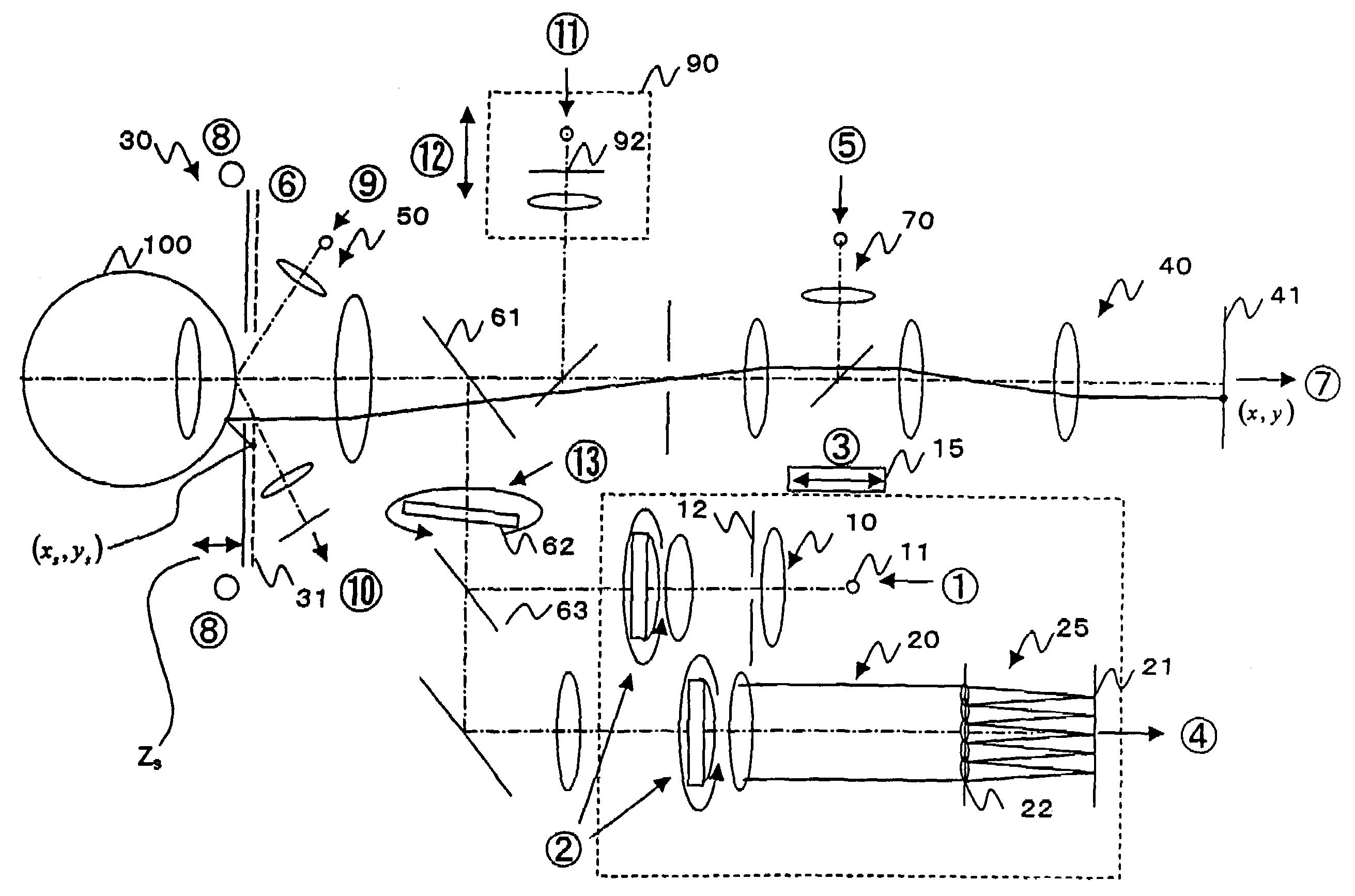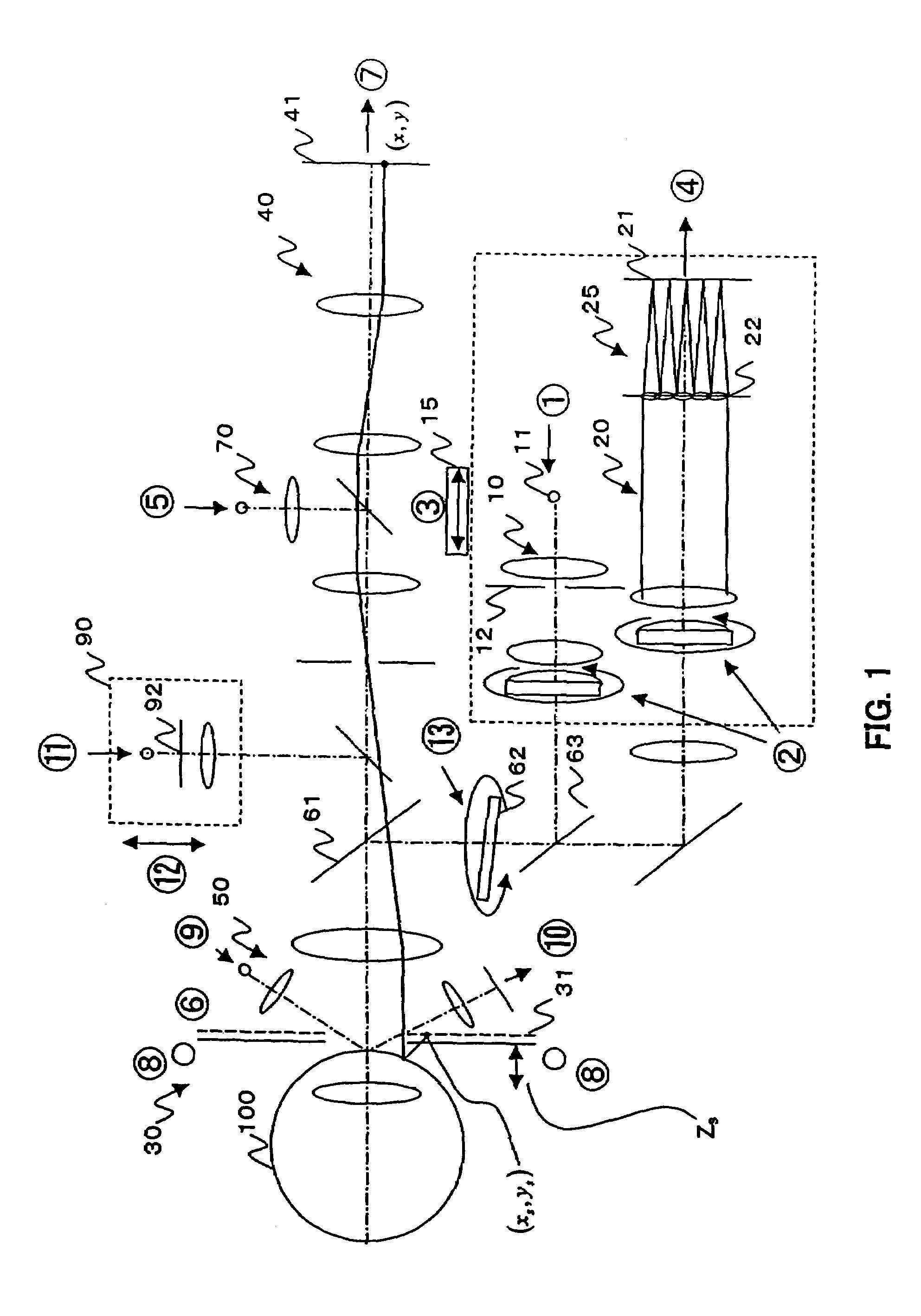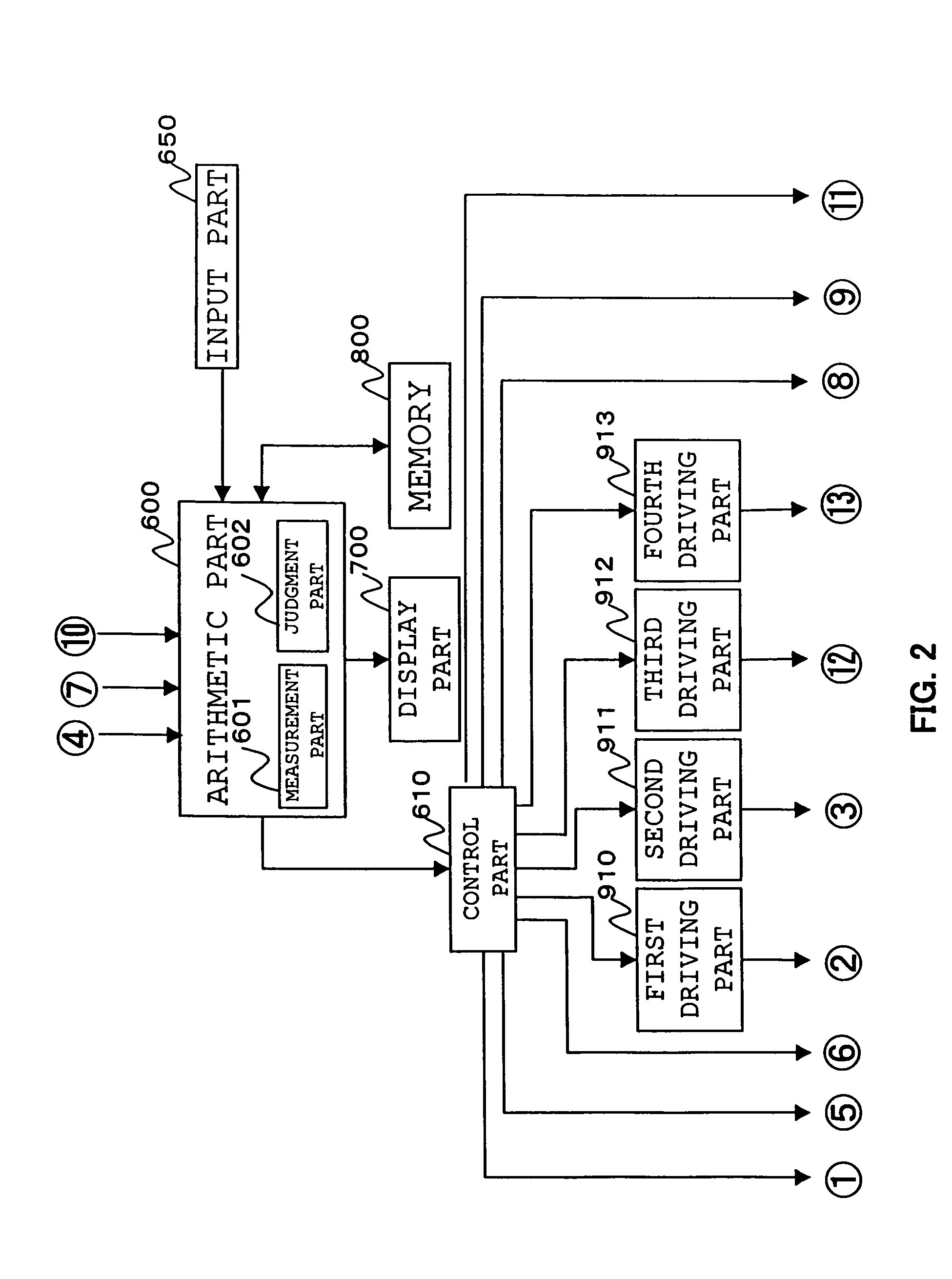Ophthalmologic apparatus
a technology of ophthalmologic equipment and wavefront aberration, which is applied in the field of ophthalmologic equipment, can solve the problems that cannot be said that the conventional ophthalmologic equipment used, sufficiently meets, etc., and achieves the effect of large wavefront aberration and effective us
- Summary
- Abstract
- Description
- Claims
- Application Information
AI Technical Summary
Benefits of technology
Problems solved by technology
Method used
Image
Examples
first embodiment
3-1. Measurement Flowchart of a Dry Eye (First Embodiment)
[0068]FIG. 3 shows a measurement flowchart of a dry eye according to a first embodiment.
[0069]When a test subject comes to a measurement position and a measurement is started, the ophthalmologic apparatus is aligned at a position where an eye can be measured (S101). This alignment may be performed manually or automatically. For the measurement of the corneal shape, it is necessary to fix the positions of the cornea and the ophthalmologic apparatus within a specified range. The ophthalmologic apparatus is manually or automatically controlled so as to fix the front and back, right and left, and up and down positions. For example, on the basis of any one of or more than one of the Placido disk (kerato-ring), a light point from infinity, a point of parallel projection, and a contour of the cornea, an operator can manually keep the alignment, or the alignment can be automatically kept by an auto alignment function of the apparatus...
second embodiment
3-5. Measurement Flowchart of a Dry Eye (Second Embodiment)
[0121]FIG. 16 is a flowchart of a dry eye according to a second embodiment. This is such that a processing of a wavefront aberration measurement of step S108 is added to the flowchart of the first embodiment, and in the subsequent processing of respective steps S11′ to S117′, similar processing to the foregoing steps S111 to S117 is carried out on the basis of both aberrations (Zernike coefficients, etc.) measured at the corneal shape measurement (S107) and the wavefront aberration measurement (S108). Accordingly, as the output, both results can be displayed for comparison on the display part 700.
3-6. Example of Binocular Simultaneous Measurement
[0122]FIG. 17 shows an ophthalmologic system structural view for a binocular simultaneous measurement. This ophthalmologic system includes optical systems 1a and 1b of FIG. 1 for both eyes 100a and 100b, and those can be independently adjusted and an alignment becomes possible for bo...
third embodiment
3-7. Measurement Flowchart of a Dry Eye (Third Embodiment)
[0123]FIG. 22 is a flowchart of a dry eye according to a third embodiment. This is such that instead of the step S107 of the flowchart of the first embodiment, the processing of a wavefront aberration measurement of step S107′ is carried out, and in other steps S101 to S105 and S109 to S117, similar processing to the first embodiment is carried out. At the step S107′, in accordance with a trigger, the measurement part (wavefront measurement part) 601 measures wavefront aberrations. Here, by the step S109, the arithmetic part 600 repeats the measurement of the wavefront aberrations by the measurement part (wavefront measurement part) 601 until time reaches a measurement end time.
4. Zernike Analysis and RMS
[0124]Next, a Zernike analysis will be described. A method of calculating Zernike coefficients ci2j-1 from generally known Zernike polynomials will be described. The Zernike coefficients ci2j-1 are important parameters for gr...
PUM
 Login to View More
Login to View More Abstract
Description
Claims
Application Information
 Login to View More
Login to View More - R&D
- Intellectual Property
- Life Sciences
- Materials
- Tech Scout
- Unparalleled Data Quality
- Higher Quality Content
- 60% Fewer Hallucinations
Browse by: Latest US Patents, China's latest patents, Technical Efficacy Thesaurus, Application Domain, Technology Topic, Popular Technical Reports.
© 2025 PatSnap. All rights reserved.Legal|Privacy policy|Modern Slavery Act Transparency Statement|Sitemap|About US| Contact US: help@patsnap.com



